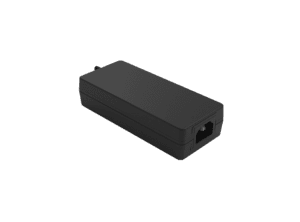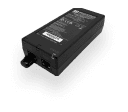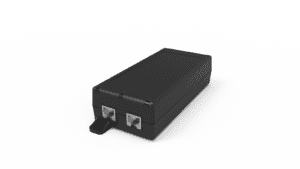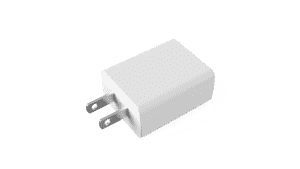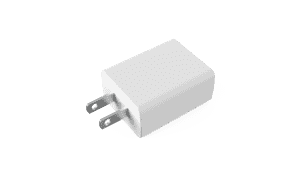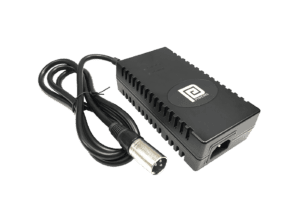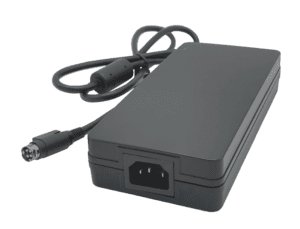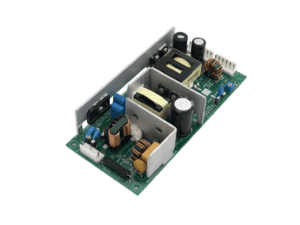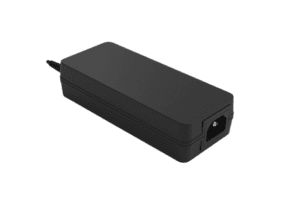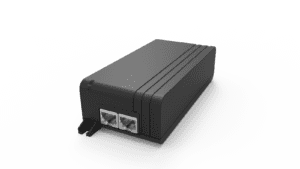BLOG
PoE Glossary: Demystifying Power over Ethernet Terminology, a Comprehensive Guide
Table of contents

As Power over Ethernet (PoE) technology becomes increasingly integral to modern network infrastructures, understanding the terminology associated with it is essential. For businesses and professionals involved in building and maintaining networks, a comprehensive PoE glossary serves as a valuable resource for demystifying complex terms and concepts. This guide explores the key terms related to PoE, helping you enhance your understanding of networking technology effortlessly.
What is a PoE Glossary?
A PoE Glossary is a comprehensive collection of terms and definitions related to Power over Ethernet (PoE) technology. It serves as an educational resource that provides clear explanations of the terminology used in PoE networks. Whether you are a beginner or an experienced professional, a PoE glossary helps you learn the language of PoE, ensuring you can effectively communicate and make informed decisions about network design, implementation, and management.
Why is Understanding PoE Terminology Important?
Understanding PoE terminology is crucial for anyone involved in the design, deployment, or management of network infrastructures that utilize Power over Ethernet. Clear comprehension of the terms and concepts allows for better decision-making, more efficient network setups, and effective troubleshooting. Additionally, a solid grasp of PoE terminology helps bridge the knowledge gap between different stakeholders, ensuring everyone from engineers to business leaders is on the same page.
Enhanced Decision-Making
By understanding PoE terminology, professionals can make more informed decisions when selecting equipment, planning network layouts, and addressing potential challenges. This ensures that the network is designed to meet specific operational needs and performance requirements.
Efficient Troubleshooting
Knowledge of PoE terms allows for quicker identification and resolution of issues within the network. When everyone involved understands the terminology, it becomes easier to diagnose problems and implement solutions, reducing downtime and maintaining network reliability.
Key Terms in the PoE Glossary
The PoE Glossary includes a wide range of terms that are essential for understanding how Power over Ethernet technology works. Here are some of the key terms you will find:
PoE (Power over Ethernet)
PoE is a technology that enables Ethernet cables to transmit both data and electrical power to network devices. This integration removes the need for separate power sources, making installations more straightforward and reducing cable clutter. By using PoE, you can simplify the setup of devices like IP cameras, VoIP phones, and wireless access points, as they can be powered directly through the same cable that connects them to the network.
PD (Powered Device)
In PoE terminology, “PD” stands for Powered Device. PDs are devices that receive both power and data through Ethernet cables from Power Sourcing Equipment (PSE) such as PoE switches or injectors. These include IP cameras, wireless access points, VoIP phones, and other network devices designed for PoE technology. PDs are categorized into different classes (Class 0 to Class 4) based on their power consumption needs, allowing PSEs to deliver the appropriate power efficiently. Understanding PDs is key for effective PoE network design, deployment, and management, ensuring seamless integration and reliable operation.
PSE (Power Sourcing Equipment)
Power Sourcing Equipment (PSE) refers to devices that deliver power to PoE-enabled devices via Ethernet cables. PSEs can be network switches or PoE injectors/midspans. They detect PoE-compatible devices and supply the appropriate power level. PSE is crucial in PoE networks for reliable power delivery and enabling the use of various PoE devices.
Passive and Active (PoE Injectors)
Passive and active injectors, also known as dumb and smart injectors, differ in their functionality. Passive injectors provide a fixed output voltage without negotiation or handshake with the powered device (PD). They are simpler and cost-effective, often used in bundled solutions where both the injector and PD are provided together.
Active PoE injectors, on the other hand, comply with IEEE standards (such as 802.3af, 802.3at, and 802.3bt) and require a handshake with the PD to negotiate and deliver the correct amount of power. This handshake ensures compatibility and safety, making active PoE injectors ideal for open architecture systems that require interoperability between devices from different manufacturers.
Detection
Detection in PoE involves the Power Sourcing Equipment (PSE) identifying whether a connected device is PoE-compatible and can receive power. This mechanism prevents damage to non-PoE devices and ensures efficient power delivery. The PSE sends a low voltage signal down the Ethernet cable to check for a valid PoE signature. If the device responds correctly, the PSE delivers power at the appropriate levels. This detection process is standardized across different PoE implementations (such as IEEE 802.3af, 802.3at, and 802.3bt), ensuring compatibility and safe operation within PoE networks.
Classification
Classification in PoE involves categorizing Powered Devices (PDs) based on their power requirements. This process helps Power Sourcing Equipment (PSE) determine how much power to deliver. PDs are classified into different classes (e.g., Class 0 to Class 8), each with specific power needs defined by IEEE standards (802.3af, 802.3at, 802.3bt). Higher classes require more power, suitable for devices with greater power demands like PTZ cameras with heaters or wireless access points. Understanding classification is essential for proper power allocation, preventing overloading or underpowering, and optimizing network performance and reliability.
Disconnect
In PoE, “disconnect” refers to the mechanism that ensures safe power delivery in case of faults or when devices are unplugged. This feature is vital for protecting equipment and the network from damage due to power surges or short circuits. After power is applied to a PD, the load is continuously monitored to ensure it remains within specified limits. When a disconnect event occurs, the PSE detects an out-of-envelope condition and stops power delivery to the affected port or device, preventing potential harm. Understanding disconnect mechanisms is crucial for maintaining the reliability and safety of PoE networks.
IEEE 802.3af
The IEEE 802.3af standard, introduced in 2003, was the original PoE standard. It supports delivering up to 15.4 watts of power over Ethernet cables. This standard is suitable for many low-power network devices but might fall short for devices requiring higher power. The 802.3af standard is widely used and provides a baseline for many PoE applications, although it may not meet the needs of more power-demanding devices.
IEEE 802.3at (PoE+)
IEEE 802.3at, commonly known as PoE+, is an enhancement of the original PoE standard introduced in 2009. It supports up to 25.5 watts of power delivery, allowing it to support more power-hungry devices. PoE+ is ideal for applications requiring additional power, such as advanced IP cameras with integrated heaters or high-performance wireless access points. It extends the capabilities of PoE to accommodate devices with greater power needs.
IEEE 802.3bt (PoE++)
IEEE 802.3bt, also referred to as PoE++, is the most recent PoE standard, introduced in 2018. It provides two types of power delivery: Type 3 and Type 4. Type 3 supports up to 60 watts, while Type 4 supports up to 90 watts. This increased power capacity enables the use of more demanding devices and advanced applications, such as high-powered LED lighting, large displays, and other industrial equipment. PoE++ significantly expands the range of devices that can be powered over Ethernet cables.
Legacy Install
When incorporating PoE into an existing system (legacy install), ensuring compatibility is crucial. Confirm that your PoE equipment is backward-compatible with older devices that may require different power levels or PoE standards. Upgrading to modern PoE injectors or switches that support IEEE 802.3af/at/bt standards can streamline the integration process, eliminating the need for extensive retrofitting.
Greenfield Install
For new installations, PoE lighting offers a streamlined setup and energy efficiency benefits. By using PoE switches that support IEEE 802.3bt (PoE++) standards, you can power high-efficiency LED fixtures through Ethernet cables. This approach simplifies installation and supports advanced lighting controls such as occupancy sensing and remote management, aligning with sustainability goals and enhancing operational flexibility and cost savings.
Midspan
A Midspan, also known as a PoE injector, is a device that adds power to Ethernet cables carrying data from a non-PoE network switch to PoE-enabled devices. It effectively “injects” power into the Ethernet line, enabling the delivery of power and data to devices that require PoE without necessitating the purchase of a PoE-enabled switch. Midspans are essential for upgrading existing network infrastructures to support PoE, allowing for the integration of PoE technology into systems where switches lack native PoE capabilities.
Pairing
Pairing in the context of PoE refers to the method by which power and data are transmitted over Ethernet cables. In traditional 10/100 Mbps Ethernet, power is delivered over the unused pairs of wires in the cable, while data is transmitted over the active pairs. In Gigabit Ethernet, power and data are both transmitted over the same pairs. Proper pairing is crucial to ensure efficient power delivery and signal integrity. Understanding and configuring the correct pairing for your network setup helps in optimizing performance and ensuring compatibility with various PoE standards.
Power Budget
The power budget of a PoE switch or injector is the total amount of power it can supply to all connected PoE devices. It is a critical parameter that determines how many devices can be powered simultaneously and the amount of power each device can receive. Accurate management of the power budget is essential for preventing overloading, ensuring that all devices receive adequate power, and maintaining the stability of the PoE network. Properly calculating and allocating the power budget helps in designing a reliable PoE system and optimizing performance across the network.
Load Detection
Load detection in PoE refers to the process by which a PoE device assesses the power requirements of connected devices. This process helps in adjusting the power delivered to match the device’s needs, ensuring efficient power utilization and preventing potential damage. Load detection involves monitoring the power consumption of each device and adjusting the output accordingly. Accurate load detection is essential for maintaining network stability, avoiding power shortages, and ensuring that all connected devices receive the necessary power for reliable operation.
PD Signature Detection
PD signature detection is a mechanism used to identify PoE-compatible devices by recognizing specific electrical signatures. This detection process ensures that power is only delivered to devices that can safely receive PoE, preventing damage to non-PoE devices. The PoE equipment sends a low voltage signal through the Ethernet cable to check for the presence of a valid PoE signature. If the connected device responds with the correct signature, the PoE equipment proceeds to deliver power. This standardized detection process is crucial for maintaining the safety and efficiency of PoE systems.
Power Negotiation
Power negotiation is the process where a PoE injector or switch and a powered device (PD) communicate to determine the appropriate amount of power to be delivered. This negotiation ensures that the PD receives the correct power level based on its requirements, preventing damage and ensuring compatibility. During power negotiation, the PoE equipment and PD exchange information to agree on the power parameters. This process is vital for the safe and efficient operation of PoE networks, particularly in environments with diverse and advanced devices.
Voltage Drop
Voltage drop refers to the reduction in voltage that occurs as electrical power travels through an Ethernet cable. Over long distances, voltage drop can affect the performance and efficiency of PoE systems, potentially leading to insufficient power delivery to connected devices. Understanding and mitigating voltage drop is essential for maintaining the reliability of PoE networks. Strategies to address voltage drop include using high-quality cables, minimizing cable lengths, and selecting appropriate PoE equipment that can compensate for voltage loss.
Surge Protection
Surge protection in PoE systems involves implementing measures or devices designed to protect PoE equipment from power surges or electrical spikes. Surges can occur due to lightning strikes, power outages, or other electrical disturbances and can cause damage to PoE devices and infrastructure. Surge protection devices (SPDs) are used to absorb and redirect excess voltage away from sensitive equipment, ensuring that the PoE network remains operational and protected against electrical hazards.
Load Balancing
Load balancing in PoE refers to the distribution of power load across multiple PoE ports or devices to prevent any single port or device from becoming overloaded. By evenly distributing power, load balancing helps in maintaining the stability and efficiency of the PoE system. It ensures that no individual port or device exceeds its power limits, reducing the risk of equipment failure and optimizing overall network performance.
Remote Power Management
Remote power management enables the monitoring and control of PoE devices from a distance. This capability includes functions such as power cycling, adjusting power levels, and checking device status remotely. Remote power management tools facilitate proactive maintenance, troubleshooting, and configuration of PoE devices, enhancing operational efficiency and minimizing downtime. Integration with network management systems allows for comprehensive oversight and control of PoE networks, supporting efficient and responsive network management.
CLIENT'S QUOTE
Phihong's Power-Over-Ethernet solutions have transformed our network, boosting efficiency and reducing costs. Their seamless integration has simplified both installation and maintenance.
Explore More with Phihong USA
As we conclude our exploration of USB-C adapter technology, it’s clear how these innovations are shaping the future of the tech world. Phihong USA is leading this technological advancement, offering a diverse range of USB-C power solutions tailored to the evolving demands of modern industries.
Phihong USA’s extensive product lineup includes:
- Power over Ethernet (PoE) Solutions: Delivering reliable power and data transmission over a single cable, ideal for simplifying network installations and reducing costs.
- AC/DC Adapters and Power Supplies: From compact adapters to industrial-grade power supplies, Phihong provides solutions that ensure efficiency and reliability in various applications.
- Battery Chargers: Customizable chargers for lithium-ion and lead-acid batteries, supporting a wide range of power requirements for mobility and industrial applications.
- Medical Power Supplies: Specialized power solutions designed to meet the stringent requirements of the healthcare industry, ensuring safety and reliability.
Phihong USA is committed to innovation and excellence, continually developing products that meet the highest standards of performance and reliability. Their global reach and dedication to customer support make them a trusted partner in powering the future.
Here are some useful links to explore Phihong USA’s offerings further and bring in new potential clients:
Visit Phihong USA to discover how their advanced power solutions can support your business needs. Whether you’re looking to upgrade your network, or find reliable power supplies, Phihong USA has you covered.
By choosing Phihong USA, you’re partnering with a leader in power technology, ensuring your operations run smoothly and efficiently with top-tier power solutions.

Contact Our Team Today!
Our dedicated sales team and international partners are prepared to support you with your latest projects and initiatives globally.
FAQ
What is a PoE Glossary, and why is it important?
A PoE Glossary is a comprehensive collection of terms and definitions that are specifically related to Power over Ethernet (PoE) technology. This glossary serves as an essential resource for anyone involved in networking, particularly those working in environments where PoE is used to power devices through Ethernet cables. The glossary demystifies complex terminology, making it accessible to both novices and seasoned professionals.
The importance of a PoE Glossary lies in its ability to bridge knowledge gaps. In the fast-paced world of technology, where new terms and acronyms are constantly introduced, having a reliable reference like a PoE glossary ensures that everyone—from engineers to business decision-makers—speaks the same language. This common understanding is crucial for effective communication, reducing the risk of misinterpretation during the planning, deployment, and management of network infrastructures.
Moreover, a PoE Glossary plays a vital role in education and training. For new team members or individuals unfamiliar with PoE, the glossary serves as an educational tool that helps them get up to speed quickly. It also aids in troubleshooting, as understanding the specific terminology can lead to quicker diagnosis and resolution of network issues. In summary, a PoE Glossary is more than just a list of terms; it’s a foundational resource that enhances knowledge, improves communication, and supports the successful implementation of PoE technology.
How can Phihong USA support my business’s PoE needs?
Phihong USA is a leading provider of Power over Ethernet (PoE) solutions, offering a comprehensive range of products designed to meet the diverse needs of modern businesses. Whether you are a small startup or a large enterprise, Phihong USA has the expertise and product offerings to support your network infrastructure and ensure its reliable performance.
One of the key strengths of Phihong USA is its commitment to innovation and quality. The company consistently develops new PoE products that are designed to meet the evolving demands of the market. These products include PoE injectors, switches, midspans, and splitters, each engineered to provide reliable power delivery and data connectivity in a variety of network environments.
Phihong USA’s products are known for their reliability, scalability, and cost efficiency. This makes them an ideal choice for businesses looking to enhance their network infrastructure without incurring excessive costs. The products are compatible with a wide range of devices, ensuring that your network can support everything from IP cameras and wireless access points to advanced industrial equipment.
In addition to its product offerings, Phihong USA provides expert support and consultation services. The company’s team of experienced professionals is available to assist you in selecting the right PoE solutions for your specific needs. They can help you design and implement a network that is optimized for performance, scalability, and future growth.
Phihong USA also collaborates with industry organizations and standards bodies to ensure that its products meet the highest standards of quality and interoperability. This commitment to excellence ensures that when you choose Phihong USA as your PoE provider, you are investing in solutions that are built to last and perform at the highest level.
For more information on how Phihong USA can support your business’s PoE needs, visit the Phihong USA website or contact their team directly at (510) 445-0100. The company’s experts are ready to assist you in finding the right solutions to enhance your network infrastructure, ensuring that your business stays connected, secure, and efficient.

